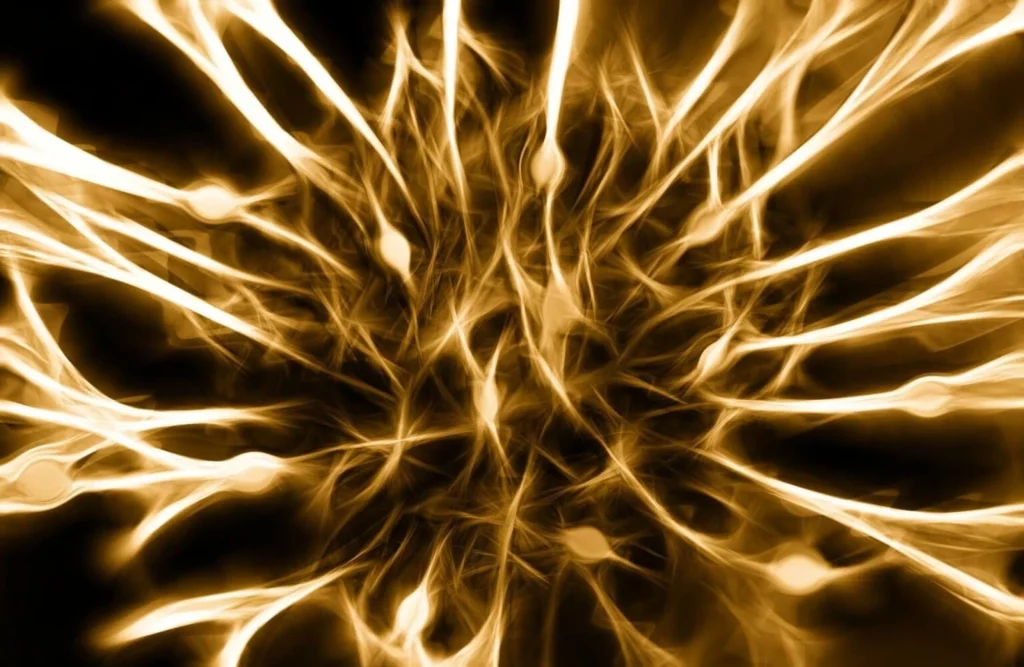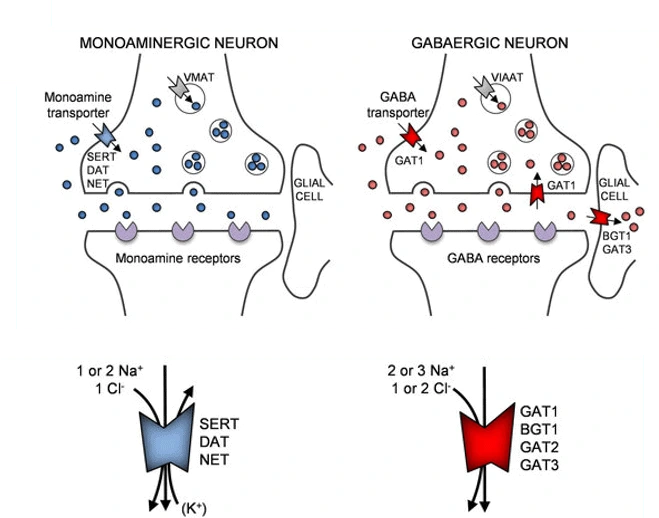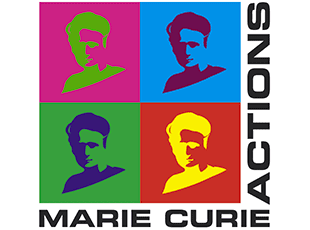Microfluidic systems for the study of neurotransmitters: NeuroTrans
This project is completed now. If interested, feel free to contact us.
Microfluidic systems for the study of neurotransmitters: introduction

Neurons interact and propagate signals by releasing small molecules called neurotransmitters, into the synaptic cleft (Fig. 1); the reuptake of these molecules is very fast (milliseconds) and is carried out by membrane proteins called neurotransporters.
Understanding how these membrane proteins interact with neurotransmitters and recreational drugs or new psychoactive substances (NPS), is a highly interesting and challenging task for scientists and biologists.
They are also interested in elucidating how their malfunction can be linked to diseases like Parkinson, epilepsy or seizures.
Studying neurotransmitters with microfluidics: project description
In the ITN consortium NeuroTrans, the Microfluidics Innovation Center will bring its expertise to develop a user-friendly microfluidic platform for cell culture on a chip that will allow multiple substrates to be tested simultaneously and offer real-time optical monitoring of cells in biocompatible conditions to elucidate neurotransmitter function.
Using the OB1 flow controller and the MUX injection valve (Elveflow), the perfusion system will provide temperature control, precise compound delivery, cell perfusion, and optical monitoring of cell growth.
Between 50 and 200 Novel Psychoactive Substances (NPS) appear each year on the illicit drug market. These substances compete with neurotransmitters to bind transporters, causing nonphysiological effects.
NPS is untested, neither for pharmacodynamic activity nor toxicological side-effects, creating a massive burden for society. Thorough and rapid characterization of NPS is, therefore, a top priority, both for healthcare professionals and policymakers.
We aim to develop a user-friendly microfluidic platform to characterize the mode of action of new psychoactive substances mimicking neurotransmitters.
This project will be undertaken in close collaboration with the Medical University of Vienna, in the group of Prof. Dr. Harald Sitte, Department of Pharmacology.

In the light of the NeuroTrans project, we developed the inflammatory bowel disease pack, and the fraction collector for cell culture.
This project has received funding from the European Union’s Horizon research and innovation program under the Marie Skłodowska-Curie grant agreement No 860954 (NeuroTrans project).
Researcher

Francesca Romana Brugnoli
Marie-Curie PhD Candidate Elvesys/MUW
- M.Sc. Politecnico di Milano (Milan, Italy)
- B.Sc. Sapienza University (Rome, Italy)
Areas of expertise:
Biomedical engineering, Microfluidics


